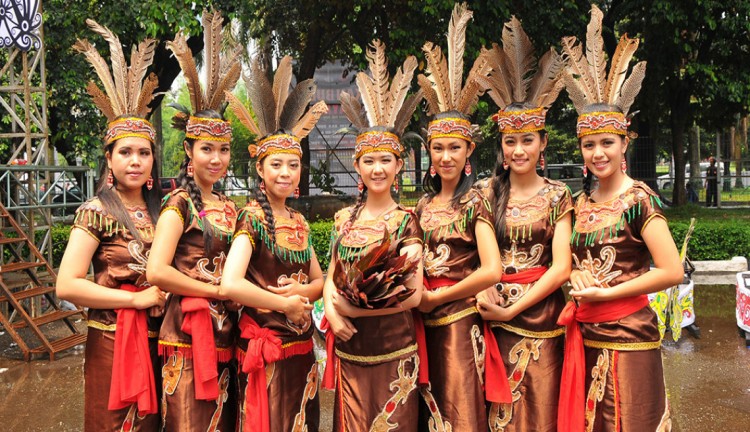Indonesia is a maritime country with more than 17,000 islands that divide the Pacific and Indian Oceans, connecting mainland Asia with the Pacific world. Having 730 indigenous languages and various ethnic groups, Indonesia is one of the most diverse regions on earth in terms of ethnicity, linguistics, and genetics (Tumonggor et al., 2013). The geographic conditions of various areas in Indonesia that differ significantly also provide a distinctive pattern to the individual phenotypes of their communities (Meinarno, Widianta, & Rizka, 2011).
Differences in individual phenotypic features are the result of the interaction of genetic information and environmental influences. Some individuals who come from the same descent may differ after living in areas with very significant differences in environmental conditions (Suryo, 1986). Forensic medicine views diversity as a factor of difficulty and challenge in identification (Butler, 2005).
Kalimantan Island or commonly known as Borneo is divided into five provinces, one of which is South Kalimantan Province. The majority of the population in South Kalimantan region is the Banjar tribe (Daud, 1997). There is indigenous people group living in the Meratus Mountains area in South Kalimantan, and they are called Meratus Mountains Dayak tribe or Bukit Dayak tribe (Radam, 2001) and the population who inhabit the watershed is Dayak Ngaju tribe (Riwut , 2003). The lack of accurate data on the differences in the characteristics of these tribes can cause difficulties in identification.
One of the factors that could be the reason for kinship between Bukit Dayak Tribe and the Banjar Hulu Tribe is the similarity and geographical proximity. These two tribes both inhabit the Meratus Mountains area, where the Bukit Dayak tribe inhabit areas that are higher and more remote than the Hulu Banjar Tribe. According to research by Haifa (2017), there are comparison characteristics of the palatine rugae pattern between Bukit Dayak Tribe, Banjar Hulu Tribe, and Ngaju Dayak Tribe.
There is no difference in the characteristics of the palatine rugae pattern between Bukit Dayak and Banjar Hulu Tribe. The existence of kinship is also stated by Radam (1987) that the similarity of language and awareness of ancestral origins leads to the conclusion that Dayak Bukit tribe comes from the same family as Banjar Hulu tribe.
On the other hand, Hulu Banjar Tribe also shows a close relationship with Ngaju Dayak Tribe. One of the factors that could be the reason for the close kinship between Banjar Hulu Tribe and the Ngaju Dayak Tribe is geographic connection. Banjar Hulu and Ngaju Dayak Tribe both live on the riverbank.
Banjar Hulu tribe, which is commonly referred to as Banjar Pahuluan, lives in the river valley area in Meratus Mountains. In contrast, Ngaju Dayak tribe lives in Kapuas, Kahayan River, and many of them also live near Barito river. There may be an intensive interaction between Hulu Banjar Tribe and Ngaju Dayak Tribe. Under the research conducted by Panghiyangani (2018): the Correlation of Foot Length, Palms, Forearms, Lower Limbs, and Body Height in the Overview of Adult Women of Bukit Dayak Tribe, Banjar Hulu Tribe, and Ngaju Dayak Tribe and the Panghiyangani et’s research (2019): Predictors of Height Based on Long Bones in Adult Males of Dayak Bukit Tribe, Banjar Hulu Tribe and Ngaju Dayak Tribe based on the measurement results of the height and length of the limb bones, the kinship relationship between Banjar Hulu Tribe and Dayak Tribe Ngaju.
There is another study by Destiarini (2017), Comparison of the Characteristics of Upper Jaw First Incisor Shovel Shape in the Tribe in Kalimantan (Dayak Bukit Tribe, Banjar Hulu Tribe, and Dayak Bukit Tribe), it was concluded that there was kinship relationship between Bukit Dayak tribe and Dayak Ngaju tribe based on the results of the comparison of the shovel shape characteristics.
This study aims at genetic variation and kinship between Bukit Dayak, Ngaju Dayak, and Banjar Hulu tribes based on CODIS STR locus.
From the results of this study, Dayak Bukit Tribe does not have a close relationship with Ngaju Dayak Tribe. The possible reason for the low level of kinship is geographic separation, where the Hill Dayak Tribe inhabit the mountains of Meratus Mountains while Ngaju Dayak Tribe inhabit river basins far from Meratus Mountains.
Based on the results of research, which shows that the three tribes also have a locus with the same allele, which means that the three tribes are related to one another, it could be the origin of their ancestor.
Author: Ahmad Yudianto
Link:
https://www.scimagojr.com/journalsearch.php?q=19700174971&tip=sid&clean=0





